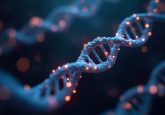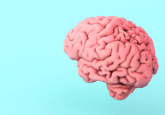Molecular mechanisms of age-related cognitive decline identified

Researchers investigating age-related cognitive decline have identified its molecular mechanisms. They found that an increase in proteins of the extracellular matrix with age lowers the ability of brain cells to adapt to new situations, slowing memory and making learning more difficult.
Our brains are capable of holding a seemingly endless supply of information, from telephone numbers to foreign vocabulary. As we age, however, this ability to learn and remember new information declines.
This cognitive decline was investigated by a team of scientists around Associate Professor Antonio Del Sol Mesa from the Luxembourg Centre for Systems Biomedicine of the University of Luxembourg (Walferdange, Luxembourg) and Dr Ronald van Kesteren of the VU University Amsterdam (Amsterdam, The Netherlands).
The team have identified the molecular mechanisms behind the decline, using the latest high-throughput proteomics and statistical methods. The results from the work were recently published in the journal Molecular and Cellular Proteomics.
As information is written into our memory, or when it is recalled at a later date, our brain cells experience chemical and structural changes. In particular, the number and strength of the connections between nerve cells, synapses, changes.
In this study, the molecular composition of brain connections in healthy mice of 20 to 100 weeks of age was explored to investigate why learning becomes increasingly difficult as we grow older. This mouse age range corresponds to a period from puberty until retirement in humans. “Amazingly, there was only one group of four proteins of the so-called extracellular matrix which increased strongly with age. The rest stayed more or less the same,” said del Sol Mesa.
A healthy amount of these proteins is vital for learning and memory. “An increase of these proteins with age makes the connections between brain cells more rigid which lowers their ability to adapt to new situations. Learning gets difficult, memory slows down,” van Kesteren explained.
The researchers also analyzed the whole picture, along with the individual molecules, using a system biology approach. They described the interplay between molecules as networks that, together, tightly control the amount of individual molecules and their interactions.
“A healthy network keeps all molecules in the right level for proper functioning. In older mice we found, however, that the overall molecular composition is more variable compared to younger animals. This shows that the network is losing its control and can be more easily disturbed when we age,” del Sol Mesa explained.
The researchers state that this makes the brain more susceptible to diseases. These new insights into the aging process therefore have the potential to help in the future to better understand complex neurodegenerative diseases such as Alzheimer’s and Parkinson’s disease. There is also the potential for promising new treatments for learning disorders and memory loss with chemical compounds that modulate the extracellular matrix.
Source: Rigid connections – Molecular basis of age-related memory loss explained; Vegh MJ, Rausell A, Loos M et al. Hippocampal extracellular matrix levels and stochasticity in synaptic protein expression increase with age and are associated with age-dependent cognitive decline. Mol. Cell. Proteomics DOI: 10.1074/mcp.M113.032086 (2014) (Epub ahead of print).





